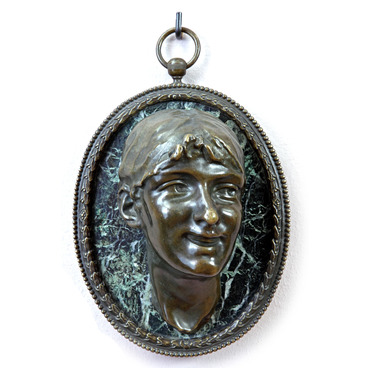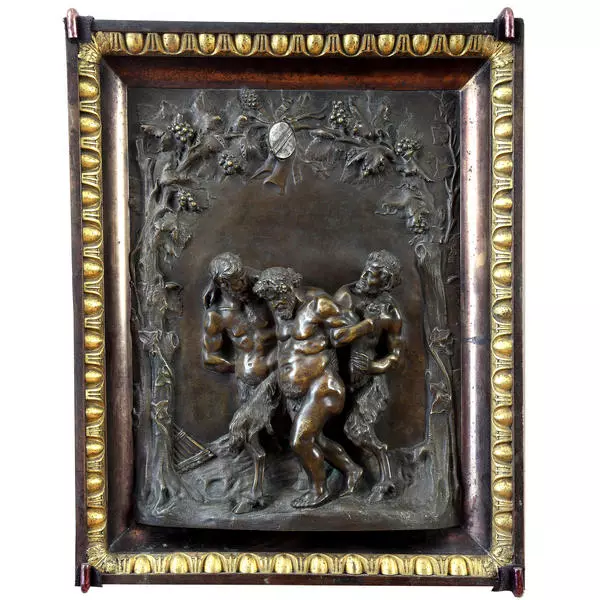The bronze high relief with a satyr’s head was created in the 19th century. Such high reliefs served as wall decorations, and only wealthy nobles could afford them. The author of the work is the French sculptor Claude-François Michel, known under the pseudonym of Clodion. He sculpted the casting mould presumably from wax or gypsum. Then the product was impressed on a special form and the image was cast in bronze. It is not known who exactly was engaged in casting — it could be both the artist himself and workers in bronze. It is important that the product bears the author’s signature: Clodion.
1 / 2
Head of a Satyr
Время создания
19th century
Размер
32х20.5х14 cm
Техника
Bronze, marble, casting, patination, polishing
Коллекция
Выставка
2
Открыть в приложении#1
Claude-François Michel, Clodion
Head of a Satyr
#2
#3
Author’s signature: Clodion
#4
This means that in any case, the sculptor took an active part in the casting: he controlled the process, made necessary changes, was personally engaged in the patination. Clodion was in demand in the highest circles of nobility, among his clients were La Rochefoucauld and Russian Empress.
#5
In ancient Greek mythology, satyrs were considered demons of fertility. They lived in forests and personified the brute force of nature. Usually they were depicted with a human body and goat legs.
#6
The high relief has a pair in the collection of the Yaroslavl Museum of Fine Arts –the head of a nymph. They are made in the same style and seem to look at each other: the satyr has turned to the left, and the nymph – to the right. The ancient Greek poet Hesiod wrote that satyrs and nymphs had common roots. However, he described satyrs as lazy and dissolute creatures: they spent time hunting, dancing and playing music, while nymphs took care of trees and lakes. Sometimes satyrs and nymphs ran together in the woods, but often arrogant satyrs chased beautiful girls against their will.
#7
The sculptor often portrayed these demons in his works. With them, he created clay figurines (terracotta), models for bronze sculptures, bas-reliefs and high reliefs. He gave them correct anatomical proportions, similar to human ones. Clodion’s satyrs often appeared in the company of bacchantes – the priestesses of the god Bacchus, the patron of wine and fun.
Clodion. Satyr and Bacchante. Louvre Museum, Paris.
#8
Clodion’s works were extremely popular. His friend and biographer Antoine Digné wrote:
“During his stay in Rome, his works would be sold out even before he had time to complete them. He worked hard for Empress Catherine II, who tried in vain to invite him to her court”.
#9
The sculptor refused to move to Russia – instead it was Etienne Falconet who left to create The Bronze Horseman.
#10
Clodion continued to make figurines of cheerful satyrs, nymphs and cupids. Many of his works became models for Sèvres porcelain. In the second half of the 19th century, when the sculptor had already passed away, his work caused a real wave of copies. Famous casters Barbedienne and Pinédo repeated bronze models by Clodion. In his style worked the sculptor Carrier-Belleuse, whom Napoleon III affectionately called “our Clodion”.
#11
Yaroslavl Museum of Fine Arts
читать дальшескрыть
00:00
00:00
1x
Head of a Satyr
Время создания
19th century
Размер
32х20.5х14 cm
Техника
Bronze, marble, casting, patination, polishing
Коллекция
Выставка
2
Открыть в приложении
Поделиться









